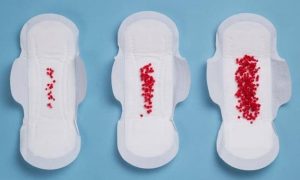In today’s world, we often find ourselves surrounded by countless pollutants and chemicals that can have a significant impact on our health.
One such group of chemicals are endocrine disruptors which are shockingly common in our everyday environments and products.
This blog post will break down the impact of endocrine disruptors specifically on women’s fertility, hormones, and reproductive health. So, let’s dive into unpacking this urgent women’s health issue.

How do Endocrine Disruptors Interfere with Hormones?
Endocrine-disrupting chemicals (EDCs) are substances that interfere with the body’s endocrine system and produce adverse effects. The endocrine system is made up of glands that secrete hormones to regulate essential bodily functions like reproduction, metabolism, growth, and development.
EDCs mimic, block or otherwise disrupt hormones in the body. This leads to imbalances in hormone signaling and an array of potential health effects. Some common endocrine disruptors include:
- Bisphenol A (BPA) – found in plastics, food packaging and more
- Phthalates – found in cosmetics, plastics, vinyl flooring
- Pesticides and herbicides
- Flame retardants
- PFAS chemicals – found in nonstick cookware, stain repellants
By imitating natural hormones like estrogen, testosterone, and thyroid hormones, EDCs trick the endocrine system and cells into responding incorrectly. This can drive over- or under-production of hormones. EDCs can bind to hormone receptors and block natural hormones from binding. They also influence how natural hormones are synthesized, circulated, and metabolized/eliminated from the body.
The interference of EDCs results in altered and damaged cellular processes that create imbalanced hormone levels. Even tiny doses can exert effects and lead to health issues. Reducing exposure to endocrine disruptors is key to maintaining proper hormone balance.
Effects on Female Fertility and Reproduction
A growing body of research demonstrates the effects of endocrine disruptors on indicators of female fertility and reproduction. Exposure to endocrine-disrupting chemicals during vulnerable developmental windows can impact the timing of puberty in girls, leading to earlier breast development and menstruation. This is concerning as earlier puberty is linked to long-term health risks including breast cancer.
Endocrine disruptors are also associated with irregularities in menstrual cycles including changes in flow, cycle length, and worse PMS symptoms. Some chemicals appear to directly impact ovulation and can lead to anovulatory cycles where no egg is released. This can negatively impact fertility.
Additionally, Endocrine disruptors may affect egg quality and increase the risk of miscarriage. Chemicals like BPA and phthalates have been detected in follicular fluid and studies show links between exposure and lower egg counts and quality. The chemicals may damage eggs by increasing inflammation, oxidative stress, and interfering with chromosomal alignment.
Overall, the concerning connections between endocrine disruptors and markers for reduced female fertility include impacts on puberty timing, menstrual cycle health, ovulation, egg quality, and miscarriage risk.
-
Endometriosis and PCOS
Endocrine disruptors have been implicated in hormonal conditions like endometriosis and polycystic ovary syndrome (PCOS), which can negatively impact fertility.
exposure to certain chemicals like dioxins and PCBs is linked to an increased risk of developing endometriosis. Endometriosis is a condition where tissue similar to the endometrium grows outside of the uterus, causing pain, irregular bleeding, inflammation, and reduced fertility. The exact mechanisms are unclear, but some chemicals appear to promote the abnormal growth of endometrial lesions.
PCOS is another common hormonal disorder, characterized by irregular menstrual cycles, excess androgen, ovarian cysts, and reduced ovulation. While the causes are multi-factorial, exposure to endocrine disruptors like BPA during critical developmental windows seems to increase PCOS risk. Some animal studies demonstrate that prenatal exposure can reprogram reproductive tissues, leading to PCOS-like symptoms. The ovary and adrenal dysfunction in PCOS may be partially explained by chemicals interfering with steroid synthesis and metabolism.
Both endometriosis and PCOS often result in fertility challenges. The conditions make it difficult to get pregnant naturally and increase risks during pregnancy. Women with endometriosis have lower oocyte quality and poorer IVF outcomes. PCOS also hampers the maturation and release of eggs. The underlying inflammation and hormonal imbalances generated by these diseases, potentially exacerbated by ongoing endocrine disruptor exposures, undermine female reproductive health.
-
Breast Cancer Risk
Several studies have found links between exposure to endocrine disruptors and increased risk for breast cancer. One study found that women with higher levels of organochlorine pesticides in their blood had two to three times the risk of developing breast cancer compared to women with lower levels. These pesticides are considered endocrine disruptors and have been banned in many countries.
Some of the chemicals linked to breast cancer include benzene, ethylene oxide, and PAHs (polycyclic aromatic hydrocarbons). Women exposed to PAHs before the age of 40 were almost twice as likely to develop breast cancer.
Since these chemicals mimic estrogen in the body, they can encourage excessive cell multiplication. This raises breast cancer risk since rapidly dividing cells are more prone to tumors and cancers. Limiting exposure to BPA and phthalates from plastics, canned foods, and other sources may help reduce breast cancer risk.
However, given the existing evidence, avoiding exposure to chemicals that interfere with hormones is a wise precautionary step for women’s health. Monitoring endocrine disruptor levels through blood and urine tests can also help assess potential breast cancer risks.
-
Thyroid Disruption
Endocrine disruptors can also negatively affect the thyroid gland and thyroid hormone levels. The thyroid is responsible for regulating metabolism, growth, temperature regulation, heart rate, and more. Disruption of thyroid function can lead to hypothyroidism or hyperthyroidism.
Some endocrine disruptors act as thyroid hormone mimics and bind to thyroid hormone receptors, blocking the real hormones from binding. This disrupts the feedback mechanisms that regulate thyroid hormone levels. Other disruptors may affect thyroid hormone transport, metabolism, or secretion. Studies show that exposure to endocrine disruptors is associated with altered thyroid hormone levels in both humans and animals. The developing fetus and infants may be particularly vulnerable.
Common endocrine disruptors that impact the thyroid include PCBs, PBDE flame retardants, perchlorate, and perfluoroalkyl substances (PFAS). PCBs and PBDEs have been shown to reduce circulating levels of thyroid hormone. Perchlorate and PFAS interfere with thyroid hormone transport and metabolism. Reducing exposure to these chemicals through dietary and lifestyle changes may help support proper thyroid function.
Endocrine disruptors are chemicals that interfere with our hormones and can have serious effects on health. In conclusion, endocrine disruptors pose a significant threat to women’s health and fertility by interfering with the endocrine system and hormone balance. Exposure to these harmful chemicals can have adverse effects on reproductive health, including reduced fertility, irregular menstrual cycles, and increased risk of endometriosis and PCOS.
It is crucial to reduce exposure to endocrine disruptors by making informed choices about the products we use and the environments we inhabit. Raising awareness about the impact of these chemicals on women’s health is essential to advocate for stronger regulations and protections.







